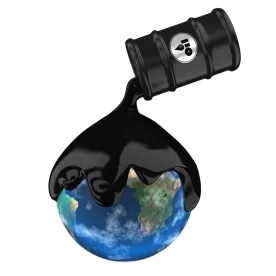The International Energy Agency (IEA)’s latest monthly market report, published on November 13, 2015, revealed that the already “massive cushion” of oil stockpiles has inflated further to reach a record level of almost 3 billion barrels. Following the announcement, oil prices reportedly dropped to a two-month low.
The IEA described this stockpile as “an unprecedented buffer against geopolitical shocks or unexpected supply disruptions.” The glut in oil supplies is expected to maintain pressure on global oil prices, which many analysts predict will remain at the lower end of a $54-$64.0/bbl range during 2016.
In this post, we highlight two observable trends in the M&A activities of industry participants during 2015 as they navigate the current challenges facing the sector.
Companies are re-evaluating their investments and debt exposure
Oil and gas companies are striving to remain competitive in the face of a sustained low in global oil prices. Many are re-evaluating their investments, and in particular, highly leveraged companies are looking to reduce their levels of debt.
On November 16, 2015, Premier Oil announced that it is selling its Norwegian business to Det Norske for $120 million (£79m) in cash, having generated an operating loss of $17.4m in 2014. Premier Oil expects the deal to complete before year end 2015 and plans to use the proceeds of the sale to cut its debt.
This announcement follows a series of deals arising out of the Norwegian North Sea during the last month, including E.ON’s decision to divest its Norwegian exploration and production business to DEA Deutsche Erdoel AG for $1.6 billion.
Buyers and sellers are aligning over valuations, encouraging deal activity
Low oil prices have, inevitably, negatively impacted upon the balance sheet of many companies. PwC has reported that oil and gas company valuations continued to be depressed during Q3 2015.
The level of deal activity during the first three quarters of 2015 indicates that buyers and sellers have managed to match their respective valuation expectations. This is consistent with an EY survey in which 85% of global oil and gas executives expected the valuation gap between buyers and sellers to remain at “bridgeable levels” during 2015, encouraging deal-making in the near term.




 />i
/>i

